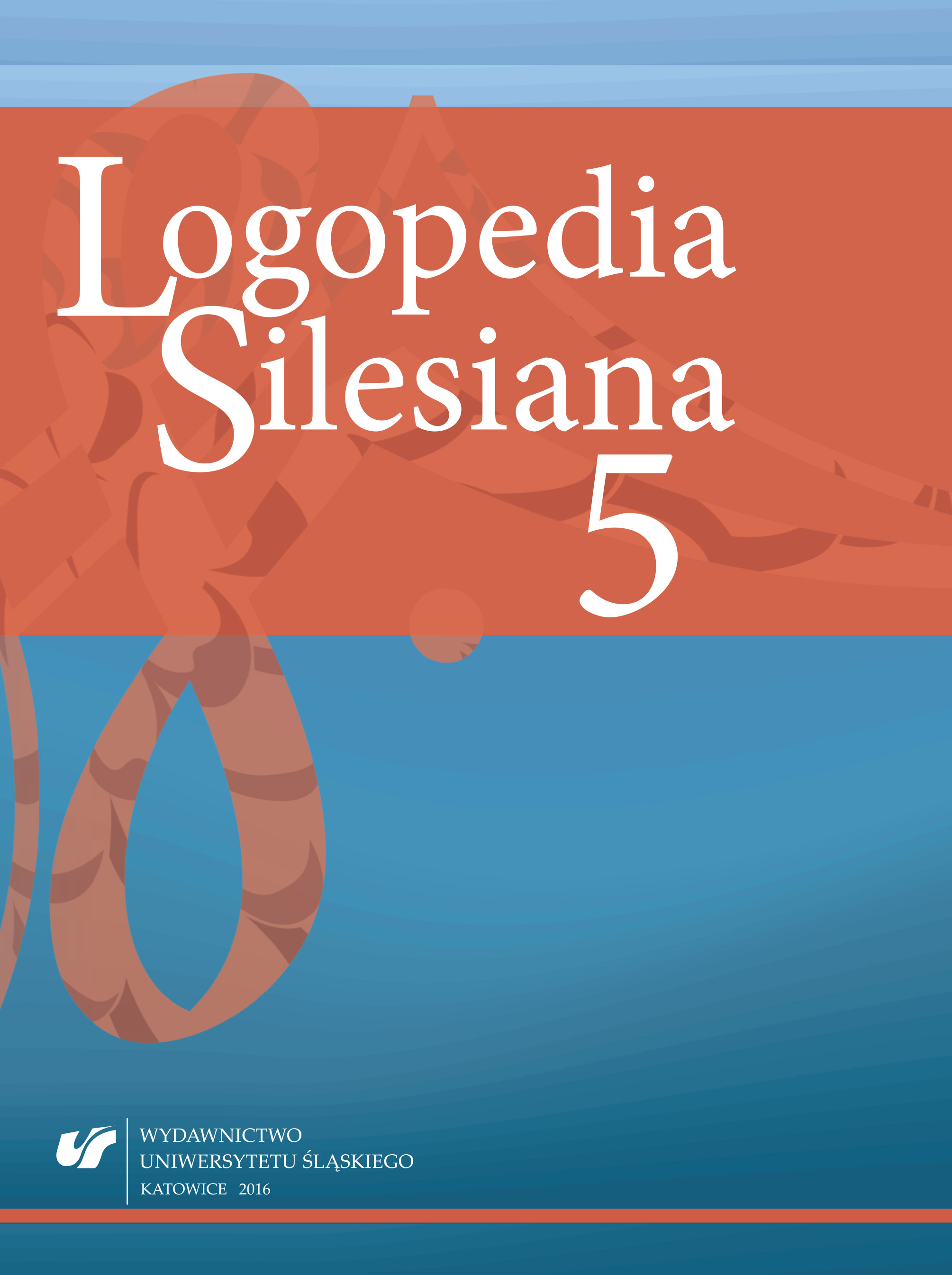Ewing I.: O odczytywaniu mowy z ust i aparatach słuchowych. Przeł. M. Góralówna. Warszawa, Polski Związek Głuchych 1974.
Google Scholar
Grabias S.: Język w nauczaniu niesłyszących. Zasady programowania systemu komunikacyjnego. W: Głuchota a język. Red. Idem. Lublin, Wydaw. UMCS, Polski Związek Głuchych 1994, s. 185–221.
Google Scholar
Korzon A.: Totalna komunikacja jako podejście wspomagające rozwój zdolności językowych uczniów głuchych. Kraków, Wydaw. Naukowe Akademii Pedagogicznej 2001.
Google Scholar
Korzon A., Plutecka K.: Kształcenie zintegrowane uczniów niesłyszących w teorii i praktyce edukacyjnej. Kraków, Oficyna Wydawnicza Impuls 2010.
Google Scholar
Krakowiak K.: W sprawie kształcenia języka dzieci i młodzieży z uszkodzonym słuchem. Lublin, Wydaw. UMCS 1998.
Google Scholar
Loebl W.: Refleksje wokół komunikacji międzyludzkiej – implikacje dla interwencji językowej osób z problemami porozumiewania. „Szkoła Specjalna” 2001, nr 3, s. 137–140.
Google Scholar
Mikulska D.: Znaki zamiast grzechotki. http://migowy.pl/pdf/bobomigi_artykul_naukowy.pdf [data dostępu: 30.10.2015].
Google Scholar
Muzyka E.: Komunikacyjna sprawność społeczna dzieci niesłyszących. „Logopedia” 2003, t. 32, s. 139–155.
Google Scholar
Perier O.: Dziecko z uszkodzonym narządem słuchu. Przeł. T. Gałkowski, Warszawa, WSiP 1992.
Google Scholar
Pietrzak W.: Dzieci z wadą słuchu. W: Dziecko niepełnosprawne w rodzinie. Red. I. Obuchowska. Warszawa, WSiP 1999.
Google Scholar
Rakowska A.: Jak porozumiewają się dzieci niesłyszące z osobami słyszącymi. Kraków, Wydaw. Naukowe Akademii Pedagogicznej 2000.
Google Scholar
Rakowska A.: Rozwój systemu gramatycznego u dzieci głuchych. Kraków, Wydaw. Naukowe Wyższej Szkoły Pedagogicznej 1992.
Google Scholar
Rozporządzeniem Ministra Edukacji Narodowej z dnia 24 lipca 2015 r. w sprawie warunków organizowania kształcenia, wychowania i opieki dla dzieci i młodzieży niepełnosprawnych oraz niedostosowanych społecznie w przedszkolach, szkołach i oddziałach ogólnodostępnych lub integracyjnych. Dz. U. 2015, poz. 1113.
Google Scholar
Szczepankowski B.: Niesłyszący, głusi, głuchoniemi. Wyrównywanie szans. Warszawa, WSiP 1999.
Google Scholar
Szczepankowski B., Koncewicz D.: Język migowy w terapii. Łódź, Wyższa Szkoła Pedagogiczna w Łodzi 2008.
Google Scholar
Tomaszewski P.: Język dzieci głuchych – wskazówki dla edukacji szkolnej. „Szkoła Specjalna” 2005, nr 3, s. 167–181.
Google Scholar
Ustawą z dnia 7 września 1991 r. o systemie oświaty. Dz. U. 1991 nr 95, poz. 425.
Google Scholar
Ustawa z dnia 19 sierpnia 2011 r. o języku migowym i innych środkach komunikowania się. Dz. U. 2011 nr 209, poz. 1243.
Google Scholar
Wereszka K.: Wykorzystywanie metody kombinowanej w edukacji dzieci niesłyszących. „Szkoła Specjalna” 2013, nr 2, s. 154–156.
Google Scholar



 10.31261/LOGOPEDIASILESIANA
10.31261/LOGOPEDIASILESIANA